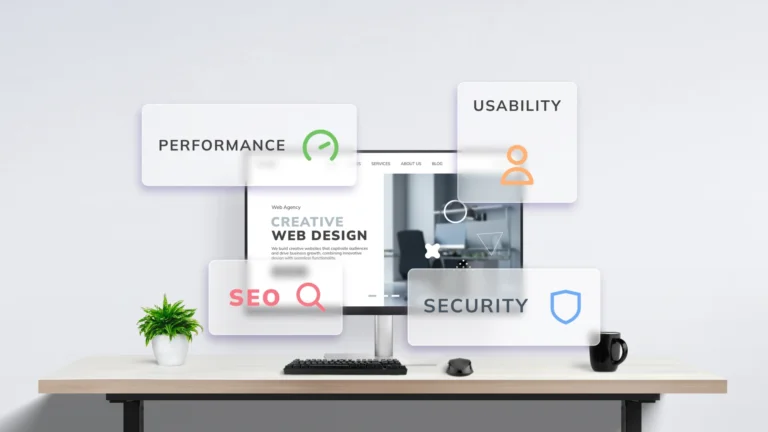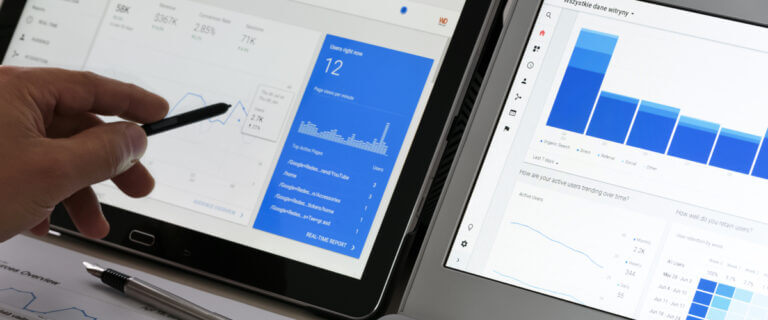When running a business, you have to make decisions. Some are big, some small. Some choices are easy. Others make you clutch your head and say, “How do I know what’s right?”
That’s why creating a framework for decision making is so crucial. It gives you a clear roadmap, makes day-to-day management easier, and eliminates much of the fear of making a bad decision.
What are decision-making frameworks?
Imagine having to hire a new team member. This important decision can be agonizing without the right framework.
At Connective, we have a process where we interview all candidates and grade each based on how closely they fit our core values. These scores help us decide who moves forward to a round-two interview.
Of course, you can use a different method that works for your company, but the point is that you need an established groundwork for making a decision.
A decision-making framework is a model that outlines the process of making a business choice, complete with context, possibilities, and the potential outcomes of each option. An effective framework simplifies your life, saves time, and defines roles for team members so everyone understands their responsibilities.
Why it’s often hard to make decisions
You can split business decisions into three rough categories:
- Important strategic choices that determine which direction your business takes
- Tactical operational decisions
- Ongoing decisions that decide your company’s day-to-day management
For example, let’s say you run a consulting business and decide that top-notch customer service is one of your brand’s core values. To achieve this macro goal, your management offers customers an initial free strategy session. This business choice also involves micro-decisions, like when to schedule each customer, how long each session takes, and what it covers.
Making a good business decision is harder when you:
- Don’t have a clear understanding of your goals
- Lack the information or data you need to make a choice
- Struggle to define your available options and their pros and cons
- Are unsure what the possible outcome of each choice may be
- Fall into the trap of FOMO (fear of missing out) or analysis paralysis
- Rely on intuition or emotion rather than on logical thinking
Each type of choice (macro, operational-level, and micro) will be easier when you know the principles of creating a decision-making framework. You’ll save time, and making a decision won’t be an arduous, mentally draining process.
Examples of decision-making frameworks
So, how do you adopt a decision-making framework? You don’t necessarily need to reinvent the wheel. One or several widely used models can be your basis for making business choices.
The decision tree model
A decision tree is a flowchart showcasing your choices and their likely consequences. It walks you through decisions by making it easy to see the potential outcome. It’s called a tree because each option or possible effect is like a branch with a different result.
This is a solid critical thinking model that leans on root-cause analysis. We like this approach because it visualizes each choice and helps you spot scenarios that could lead to a bad outcome.
The working backward model
The principle of working backward is simple: You define your end goal and go backward to identify the steps you need to take to make it happen. It can work well if you know exactly what you want to achieve. For example, we plan to expand our service to Europe. To do that, we need to hire an EU-based marketing team and check European regulations.
The Eisenhower Matrix
The credit for this model belongs to Dwight D. Eisenhower, the 34th president of the United States, who created it back in the 1950s. The Eisenhower Matrix breaks decisions into four Ds: Do, Decide, Delegate, and Delete. That’s how this works:
- Do: urgent and important. Example: a supplier contract you need to renew or cancel in the next few days.
- Decide: not urgent, but important. Example: set revenue goals for the next two years.
- Delegate: urgent, but not important. Example: replace broken office chairs.
- Delete: not urgent and not important. Example: check out coffeemaker models for the office.
Eisenhower’s framework can help you see which decisions call for your immediate attention, which you can entrust to another team member, and which are only distractions that waste your time.
Make decisions with your goals in mind
When working to reach a business decision, you want to make the optimal choice. But what is the best choice? Is it the cheapest, quickest, easiest, or most popular option?
Keeping your long- and short-term goals in mind will help you gain clarity and establish sound criteria for your decisions, such as:
- Technical: Does this solution work practically?
- Economic: Does this choice fit our budget? What ROI do we expect?
- Interpersonal: How will this decision influence company dynamics and our relationships with clients?
For example, let’s say you need to decide between advertising in your established niche or branching out to a new market. The former will likely yield a better bottom line in the here and now, while the latter may involve a longer client acquisition process but could help you grow in the long run.


Your role as a leader
If you’re a business leader, your decisions will carry more weight than those of junior team members. You may be responsible for defining flagship values, outlining macro goals, and making strategic choices.
For example, a lot of your efforts may revolve around finding high-quality sales prospects. There are only so many people to whom you can pitch your product or service, so we usually recommend choosing quality over quantity, especially if you run a small business.
As a founder, manager, or team leader, you’ll often need to decide:
- What you should do. Should you aim for younger or older prospects? People with higher or lower income?
- Why you should do it. Why do you think this specific demographic is a better fit for your business model?
- How you should do it. What branding and marketing strategies will you use to appeal to your ideal customer?
- Who should do it. Who will be responsible for ongoing marketing decisions and networking with clients?
Get your team on board
Carrying on from the last point (who should do it?), you shouldn’t handle everything yourself. Part of creating a decision-making framework is delegating small to mid-level decisions to your team. Doing so will free up time, allow you to focus on the big picture, and help you avoid a constant barrage of distracting choices.
If we go back to the prospect-hunt example, while your business is in its diapers, you might personally oversee the entire client acquisition process. But as your company grows and you have more tasks on your plate, you could transfer some of the responsibility to trusted team members.
For example, you could create a profile of your ideal customer, including their demographics, buying patterns, interests, and pain points. Your acquisition team would then target prospects based on this customer persona.
Why feedback matters
No decision-making framework is perfect, and even though we all try to do our best, some choices won’t yield the results we hoped for. And that’s OK: You just need to get feedback from your team and clients, reexamine your choices, and adjust your plan.
Regular, reliable, and actional feedback can help you fine-tune your business strategies. For instance, when picking a new design for your product’s package, you make a choice based on available information, which may be limited.
By taking a moment to reevaluate, you may discover that your sales actually decreased since you redesigned the package. Feedback can help you understand why this happened. You may realize your packaging’s new colors send the wrong message or are too similar to a competitor brand. Once you know that, you can make a different choice.
Data and analytics in business decisions
Good business decisions are typically data-driven. You may have a lot of raw data on your customers or past sales, but you need to analyze this information correctly to spot trends that will help you make decisions.
You can use various data analysis tools to dissect data and turn it into actionable insights.
Looker Studio
Looker Studio (formerly known as Google Data Studio) is a tool that converts data into clear, detailed charts, graphs, and maps. It integrates with other data sources, like Google Sheets and Google Analytics, and allows team members to collaborate in real-time.
Power BI
Microsoft’s Power BI is a convenient platform for data visualization and analytics. Power BI makes it easy to aggregate your data and create and share reports. Its live dashboards are especially useful for tracking KPIs.
Alteryx
You can use Alteryx to analyze and share data. Alteryx can help you segment your customers, dissect costs, forecast customer behaviors, and more. It’s a practical tool for sales, marketing, HR teams, and anyone who makes business decisions in your company.
Making Decisions in Times of Uncertainty
Decisions always require thought and planning. This is doubly true when an unexpected development pulls the rug from underneath your feet. Many business leaders had to make quick and hard decisions during the COVID-19 pandemic while the future seemed bleak and revenues were dropping.
When a crisis hits, a model known as ISSUES can help you make fact-based and timely decisions:
- Identify the problem
- Study the facts
- Select practical options
- Understand your priorities
- Evaluate your choices
- Sustain your plan
Fear of making a wrong choice can impede your decision-making abilities. You may suffer from analysis paralysis if there are too many options to weigh or there is too much information to consider. Remember that taking any step is usually better than doing nothing in this situation. You could also get more people, like team members or stakeholders, involved in the decision.
Becoming a better decision maker
Some people are natural critical thinkers and decision makers. Others are more indecisive and tend to overthink every move. Luckily, you can improve your decision-making skills with the right approach and some practice.
One way to do this is through decision-making coaching. This form of coaching can equip and empower you to make better decisions with more confidence. A coach can help you explore your usual decision-making process, spot false beliefs or biases that hamper your decision making, manage risk, and gain tools to make well-rounded, fact-based decisions.
Decision-making coaching can also help you adopt a more assertive attitude when making decisions during a crisis. This type of coaching can benefit you and other people in key positions in your organization, like department leaders and team managers, who may be responsible for creating a framework for decision making.
Honing your decision-making skills may take time, but you’ll reap the rewards of higher productivity and a more balanced perspective. Weighing your options will become easier, and you won’t waste as much time and effort on every decision.
The future of decision making
As long as businesses exist, so does decision making. Business leaders have to make choices about product development, branding, marketing, sales, hiring, and endless other aspects of running a business.
No one’s decisions are always 100% accurate, even if you use all the right models. However, new technologies, including AI-powered tools, may help business leaders make decisions based more on solid data and less on guesswork and intuition. AI models can analyze data and answer questions, build summaries, and generate alternative scenarios to help you gain clarity.
AI technology can’t eliminate bias or conflict of interest, but it can assist you in making quicker, more accurate, and more collaborative decisions with better risk management. Of course, using data analytics for informed decision making isn’t anything new, but AI brings the advantage of super-fast data processing, identifying patterns, and testing multiple options.
I hope this article helps you create a solid framework for decision making. I know that implementing these concepts in my company has not only helped me streamline my internal processes, but it has also helped my company-wide organization. If you end up implementing some of these ideas yourself, I truly hope that they work as well for you as they did for me. Thank you for reading!













